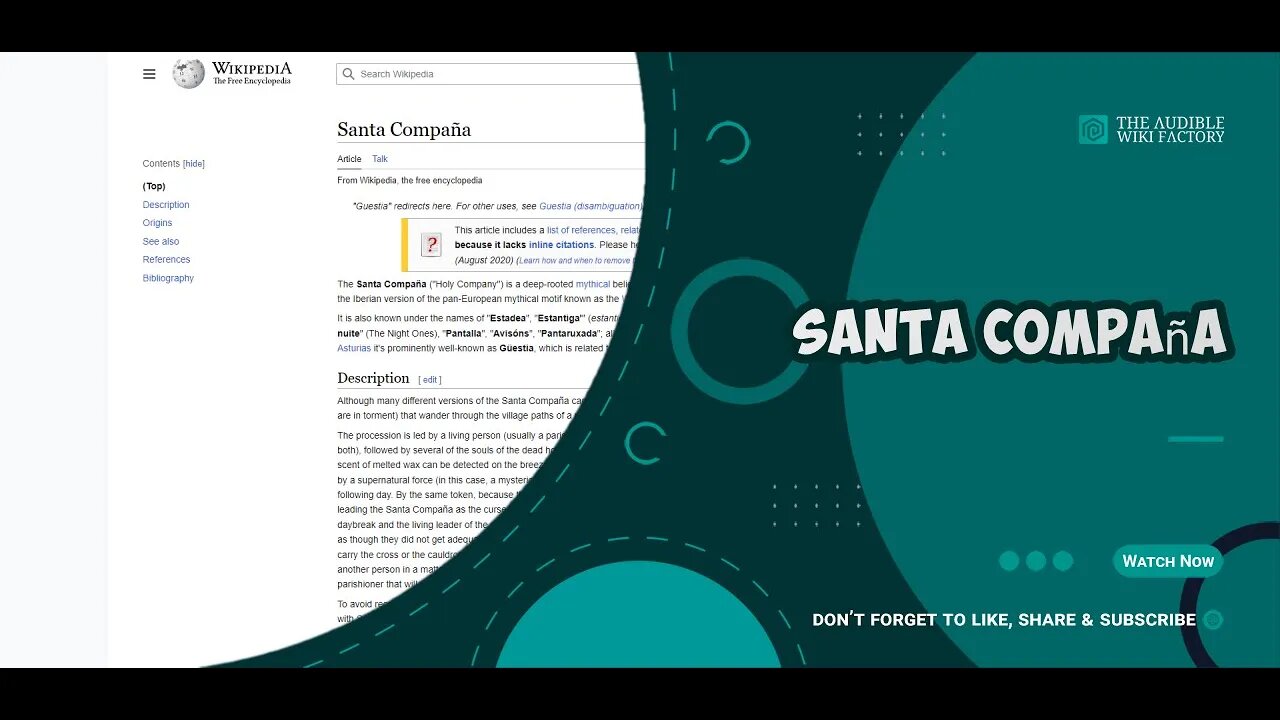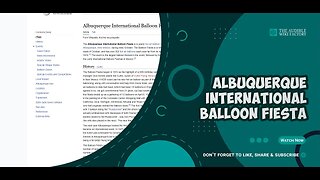Premium Only Content

The Santa Compaña is a deep-rooted mythical belief in rural northwest of Iberia Galicia,
The Santa Compaña ("Holy Company") is a deep-rooted mythical belief in rural northwest of Iberia: Galicia, Asturias (Spain) and Northern Portugal. It is the Iberian version of the pan-European mythical motif known as the Wild Hunt.
It is also known under the names of "Estadea", "Estantiga'" (estantigua in Spanish, from Latin hostis antiquus, meaning "ancient host"), "Rolda", "As da nuite" (The Night Ones), "Pantalla", "Avisóns", "Pantaruxada"; all of which are terms that denote the presence of the dead in the world of the living. In Asturias it's prominently well-known as Güestia, which is related to the Asturian word "güeste" (host in English language).
DESCRIPTION
Although many different versions of the Santa Compaña can be found, the common belief is that of a procession of the dead (or a procession of souls that are in torment) that wander through the village paths of a parish beginning at midnight wearing white, hooded cloaks.
The procession is led by a living person (usually a parishioner of a particular church) carrying a cross or a cauldron of holy water (sometimes they carry both), followed by several of the souls of the dead holding lit candles. Although these souls are not always seen, the popular legend said that the scent of melted wax can be detected on the breeze which appears as they pass to warn of their presence. The living leader of the procession is compelled by a supernatural force (in this case, a mysterious curse) to go out every night and walk by towns, villages and forests; but having no recollection of it the following day. By the same token, because the living person is unaware of what she/he is doing, there is no chance that they will renounce his duty in leading the Santa Compaña as the curse that forces them to lead the procession puts them into a trance every midnight. The procession ends before daybreak and the living leader of the procession returns to her/his bed with no memory of what occurred the next morning but feeling very tired and weary as though they did not get adequate rest. She/He can only be freed of the curse if they manage to come across another person during the procession to carry the cross or the cauldron (or both), as the curse will be passed onto that person. It is said that if the curse leader does not pass the curse onto another person in a matter of weeks, she/he will eventually grow pale, thin and sickly and eventually die and the curse will be passed onto another parishioner that will unknowingly receive the curse.
To avoid receiving the curse, the person who sees the Santa Compaña pass by must quickly draw "Solomon's Circle" on the ground using chalk (a circle with Seal of Solomon inside a six-pointed star, which can be changed into a cross) and enter it, or they can also lie face-down until the procession passes. Another way to evade the Santa Compaña is to tie a black cat in the middle of the Santa Compaña's path and run away quickly from it, or to perform diverse warding symbols with both hands such as the horn gesture (extending the index and little fingers and to contract the rest of fingers) or the fig sign (which consists of closing the fist and putting the thumb between the index and middle fingers). The person leading the procession can be a man or a woman—this depends on whether the patron saint of the parish is male or female. The Santa Compaña's purpose is to announce death and its primary mission is to visit the homes where death is due.
According to popular belief, apart from the living procession leader, the Santa Compaña can't be seen but can be felt, eliciting a shiver or shudder as it passes, accompanied with a sensation of intense danger. It is also believed that those who can see the Santa Compaña are people who, when baptised by the...
LINK TO ARTICLE: http://en.wikipedia.org/wiki/Santa_Compa%C3%B1a
TAGS: Santa Compaña, Spanish ghosts, Portuguese legendary creatures, Asturian mythology, Galician mythology, Christian folklore
#GeneralKnowledge #AudibleWikiFactory #Audible #Wikipedia #SantaCompaña
-
 9:22
9:22
The Audible Wiki Factory
1 year agoThe Albuquerque International Balloon Fiesta is a yearly hot air balloon festival that takes
713 -
 1:00:36
1:00:36
PMG
21 hours ago $0.66 earned"Santa Trump is Giving Us Hope - But Will Johnson Stand Strong?"
8.06K6 -
 54:30
54:30
LFA TV
1 day agoThe German Strongman’s Arrival Is Imminent | Trumpet Daily 12.18.24 7PM EST
15.8K1 -
 2:04:11
2:04:11
Melonie Mac
4 hours agoGo Boom Live Ep 32! Soul Reaver Remastered!
16.5K5 -
 39:11
39:11
Sarah Westall
2 hours agoDigital Slavery and Playing with Fire: Money, Banking, and the Federal Reserve w/ Tom DiLorenzo
28K1 -
 1:38:38
1:38:38
2 MIKES LIVE
6 hours ago2 MIKES LIVE #157 ILLEGALS, PROTESTORS AND DRONES!
16.9K1 -
 1:01:03
1:01:03
LFA TV
1 day agoTHE LATEST SPENDING BILL IS AN ABOMINATION! | UNGOVERNED 12.18.24 5pm EST
23K28 -
 1:43:34
1:43:34
Redacted News
6 hours agoBREAKING! WARMONGERS PUSHING TRUMP TO LAUNCH PRE-EMPTIVE WAR WITH IRAN | Redacted News
125K223 -
 1:00:26
1:00:26
Candace Show Podcast
5 hours agoPiers Morgan x Candace Owens | Candace Ep 123
70.7K192 -
 2:06:51
2:06:51
Darkhorse Podcast
8 hours agoThe 256th Evolutionary Lens with Bret Weinstein and Heather Heying
55.8K25